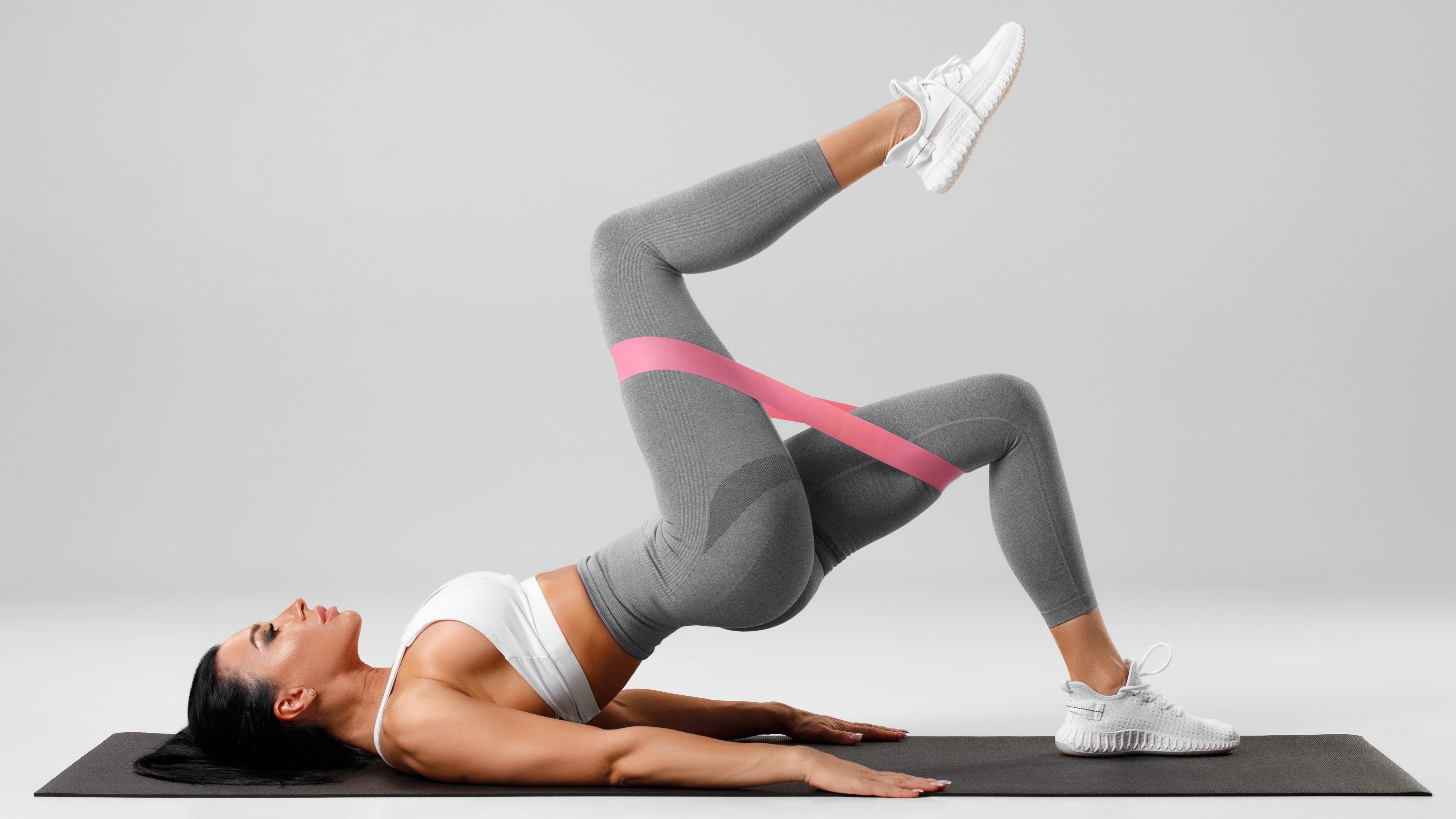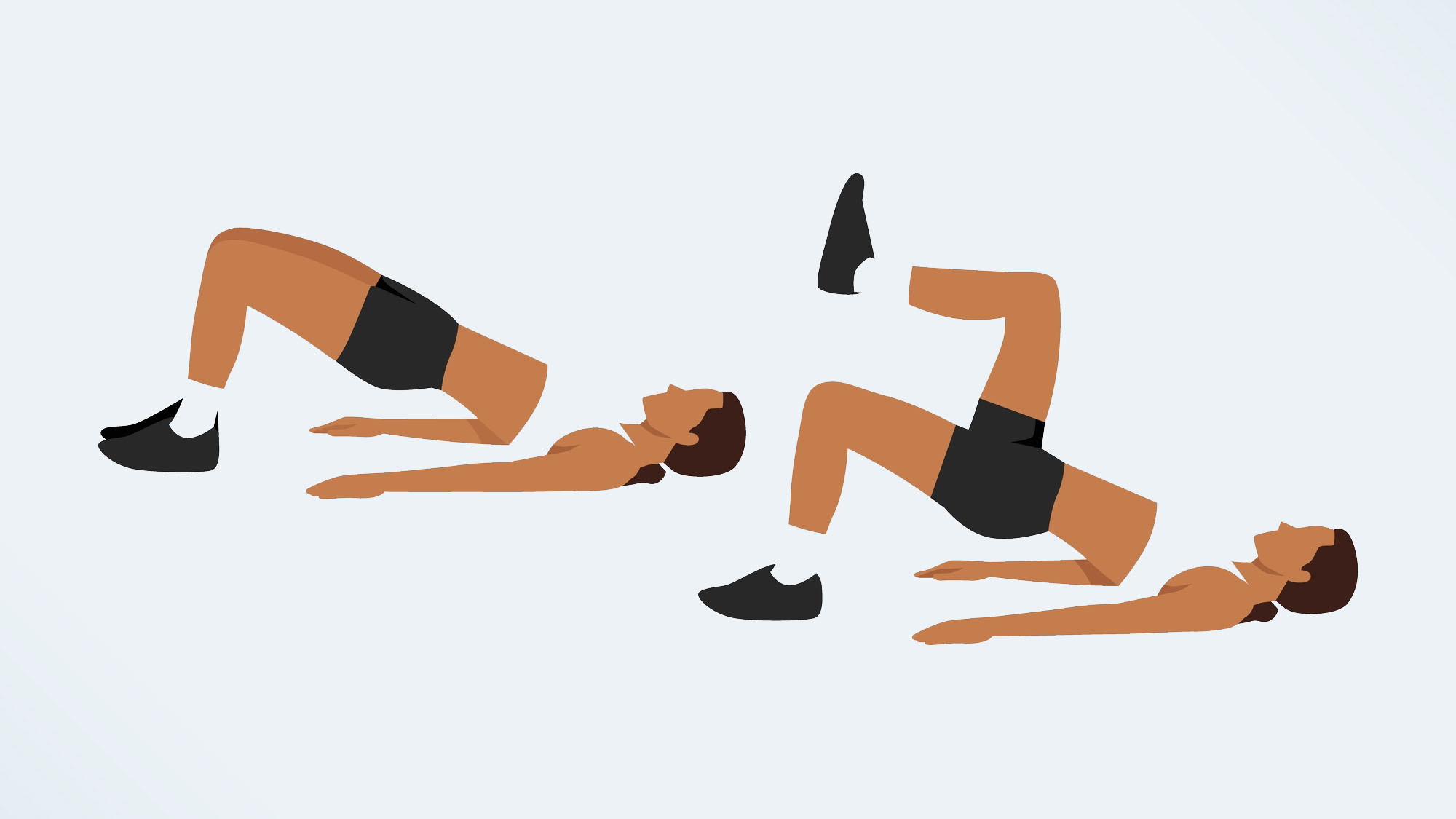I did the glute bridge march every day for a week — here's what happened
This variation on a popular exercise ups and ante — and the legs

When people do exercises that focus on the glutes, they will tell anyone within earshot that strong glute muscles help improve posture, alignment, balance, and overall stability (thereby helping to prevent injury), and that they aid sporting performance. “Did you know the gluteus maximus is the biggest muscle in the body?” they will inevitably ask.
All of the above is true, but what they are also thinking as they work on their glutes is: “Man, my butt’s going to look great; I’m looking forward to walking away from people.” If this is the outcome you’re looking for (it is, at least in part), the glute bridge march is an ideal exercise. Of course, the glute bridge in all its variations also targets the hamstrings, but whatever…
The basic glute bridge is an extremely popular body-weight move for many excellent reasons: It can be performed anywhere, it targets several muscle groups, it requires no equipment, and you do it lying down. Here's how to do a glute bridge, plus what happened when this fitness writer did 50 glute bridges a day for a week. It’s a straightforward move, for sure, but one that, done right, you will feel immediately. Adding the marching aspect makes it that much harder. One more thing: It looks relatively easy, but there are few moves more likely to be performed incorrectly.
How to do the glute bridge march
Ready to get started? Here's how to do this simple-sounding move:
- Begin by lying on your back, knees bent, feet flat and arms by your side. One frequent error at this point is drawing your feet too close to your body; to complicate matters, another is having them too far away. You should not be able to touch your heels with the tips of your fingers and your lower leg should be almost vertical.
- Next, press your feet into the floor and slowly raise your hips while engaging your core, so that your knees, pelvis and shoulders form a straight line. This is the basic glute bridge. From this position, I recommend rising onto your heels. (I found this helped to focus the move more on the glutes and less on the hamstrings, but keep your feet flat on the floor if you are more comfortable that way.)
- Push into the floor with your right knee and foot, and smoothly raise your left knee toward your chest — try to form a right angle with your torso and thigh. You’ll be concentrating on your lower body but be aware of your upper body, too.
- Keep your weight evenly distributed by not pushing into one shoulder or the other to maintain balance. Return your foot to the floor, landing lightly and briefly on your heel, and repeat on the other side. And so begins the march. To begin with, aim for three sets of 10-12 reps on each leg, and see how you feel.
The most common form mistake people make doing this move is overarching the lower back, in the mistaken belief that higher is better. This, of course, puts strain on the back, so watch your form. It’s also tempting to let your midsection sag, and there is a tendency to let the hamstrings do the heavy lifting, which is not what the move is all about: The glutes should be the prime mover here.

I did the glute bridge march for a week and this is what happened
Day 1
Full disclosure: Because I’m familiar with the glute bridge, I blithely assumed the march variation would be a breeze that gently caressed my hair and had a pleasant overall cooling effect. And, on day one, I was right. I lay down, raised my hips, glided through the reps, and felt nothing at all. No sense of effort or strain — no indication whatever that I had been doing an exercise. Perhaps I’ll feel it later in the day, I wondered, idiotically. I didn’t because I was doing almost everything wrong. In fact, the only part of the move I executed properly was when I lay down on the floor. It was a no-brainer because I wasn’t using my brain.
Day 2
On day two, I slowed down, focused on maintaining a straight line from shoulder to the knee, and tapped my heel on the floor each time I returned to the start position. It felt better but later that day I felt the effort of the exercise in my lower back, not my glutes. I’d been overcompensating for the carelessness of day one by arching my back.
Get instant access to breaking news, the hottest reviews, great deals and helpful tips.
Day 3
Day three was slightly better again, but it was only on day four that I cracked it. You see, the raising and lowering of the leg is, to an extent, misdirection. The tension is all on the other side, which appears to be doing nothing more than holding you in position. But if you touch your glutes on that side, you’ll feel them doing their damnedest to keep you straight and true. And that’s hard work. At the same time, the moving leg is providing a different kind of workout, improving mobility and flexibility.
Day 4 onwards
As the week progressed, I found I could add reps without much difficulty; this was as much a matter of good form as it was strength and growing confidence. On the final day, I did the move with my arms crossed high on my upper chest. This meant I couldn’t rely on my arms and shoulders to keep me stable, which gave my core more work to do.
I was less than impressed with this move in the first couple of days, but once I nailed the form, I looked forward to doing it each day, because it’s a winner. Obviously, it takes longer than a week to discern a noticeable improvement in strength or shape, but I have to confess, at the end of the week I did consider going for a run in just running tights — no shorts on top. Thankfully, the moment of madness passed. Try this one: You won’t regret it.
More from Tom's Guide
- This is Ryan Reynolds' arm workout for Deadpool 3 — and it’s surprisingly simple
- I did 30 supermans a day for a week and here’s what happened to my body
- I did 50 bird dogs a day for a week — and the results surprised me
John is a writer and editor based in London. He was worked for magazines such as Runner’s World, Men’s Health, Women’s Health and Cosmopolitan. A keen runner, what he lacks in ability he makes up for with enthusiasm and excuses.

